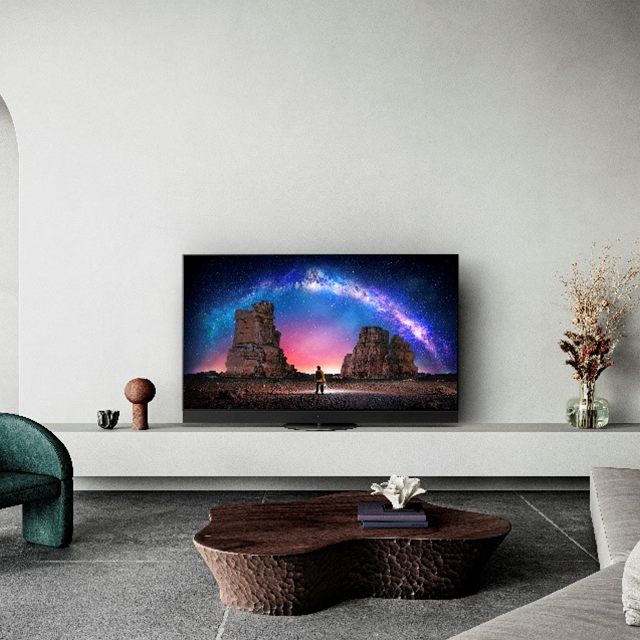
Transparent OLED: Vision of the future
Ever wondered what the TV of the future would look like?
Our new, concept transparent OLED display, developed with Swiss furniture brand Vitra, could be the shape of things to come…
How will new technology seamlessly integrate and blend into the home of the future?
As part of a two-year research project with Swiss furniture brand Vitra, we have been exploring that question and here’s the first product off the drawing board – a concept transparent OLED display called Vitrine that’s part TV, part work of art, combining the best in entertainment with an ambient experience.
Resembling a glass cabinet and crafted from a wooden frame holding what appears to be a pane of glass, it was unveiled at this year’s Salone del Mobile furniture exhibition in Milan, Italy, as part of an installation by Vitra.
The product, which wowed visitors to the show, isn’t commercially available, but we are taking on board feedback about it and looking if there is a demand for such a device in the market.
Vivid
Vitrine blends naturally into any contemporary living space, but
the moment the product is switched on, it transforms into a vivid OLED display.
Designed by Scandinavian-based designer Daniel Rybakken and the
Panasonic Design Centre based in Kyoto,the OLED display consists of materials such as wood, metal and glass.
The technological components are cleverly concealed within the wooden frame, which doubles as a stand for the device.
A lighting element is unobtrusively housed within the frame, adding to the ambient experience.
The design of the Vitrine was inspired by a glass case, as Michael Shadovitz, senior designer, Panasonic AP Design Centre, explains: “We wanted the form factor to be as pure as possible. The wooden frame is a stand, but it also incorporates all the components. We added a piece of glass that has a transparent display attached to it, and then the third part is a lighting element.”
Flexibility
When we were designing the product, one of the key things we wanted to address was the ‘black hole’ that is created when a normal TV is switched off.
With the transparent OLED, when it’s not turned on, it doesn’t have to just show a black display – users can place items, such as ornaments, behind the screen to showcase them, like in a glass cabinet.
Unlike traditional TVs, the design doesn’t limit where you can place the product in a room.
Says Michael: “Personally, I’m interested in the way in which the TV affects the way we set up our living room – in terms of the location, the cable outlet determines where you put the TV, and where you put the TV depends on where you put the sofa.
“The design of the OLED has no front or back – it’s just a transparent piece of glass with a frame, so I could imagine it being placed anywhere in a room. There’s a flexibility to it – that was one of the important things about the design.”
Challenges
Smart devices are part of consumers’ everyday lives, but one of the challenges faced by manufacturers and designers is how to create high-tech products that can be easily incorporated into homes, but that don’t take over the living space.
“Technology is getting simpler – there are fewer parts and everything is going wireless and is more modular and flexible,” says Michael.
“The transparent OLED is a good example – it is high-tech, but it’s also just a glass display with a frame – it’s a pure and simple combination with three different elements. It’s interesting how technology is working in designers’ favour.”
He adds: “We can’t kick technology out – it’s part of our lives –
but we have to look at how we integrate it – we wanted to make a different experience for people.”






